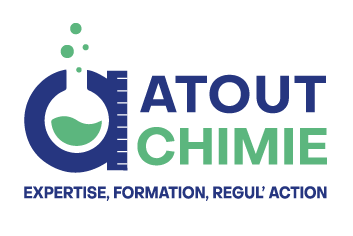REACH regulation on substances imported and manufactured in Europe
23 Avr
3 - 4 questions | 6 contents max.
 Entry into effect / Next deadline
Entry into effect / Next deadline
 Average estimated time to comply
Average estimated time to comply
 1500 €
1500 €
 Theoretical penalty(s) of non-compliance subject to the judge's discretion and, where applicable, to certain conditions
Theoretical penalty(s) of non-compliance subject to the judge's discretion and, where applicable, to certain conditions
 Entry into effect / Next deadline
Entry into effect / Next deadline
 Average estimated time to comply
Average estimated time to comply
 20000 €
20000 €
 Theoretical penalty(s) of non-compliance subject to the judge's discretion and, where applicable, to certain conditions
Theoretical penalty(s) of non-compliance subject to the judge's discretion and, where applicable, to certain conditions
 Entry into effect / Next deadline
Entry into effect / Next deadline
 Average estimated time to comply
Average estimated time to comply
 75000 €
75000 €
 Theoretical penalty(s) of non-compliance subject to the judge's discretion and, where applicable, to certain conditions
Theoretical penalty(s) of non-compliance subject to the judge's discretion and, where applicable, to certain conditions
 Entry into effect / Next deadline
Entry into effect / Next deadline
 Average estimated time to comply
Average estimated time to comply
 1500 €
1500 €
 Theoretical penalty(s) of non-compliance subject to the judge's discretion and, where applicable, to certain conditions
Theoretical penalty(s) of non-compliance subject to the judge's discretion and, where applicable, to certain conditions
 Entry into effect / Next deadline
Entry into effect / Next deadline
 Average estimated time to comply
Average estimated time to comply

 Theoretical penalty(s) of non-compliance subject to the judge's discretion and, where applicable, to certain conditions
Theoretical penalty(s) of non-compliance subject to the judge's discretion and, where applicable, to certain conditions
 Entry into effect / Next deadline
Entry into effect / Next deadline
 Average estimated time to comply
Average estimated time to comply
 1500 €
1500 €
 Theoretical penalty(s) of non-compliance subject to the judge's discretion and, where applicable, to certain conditions
Theoretical penalty(s) of non-compliance subject to the judge's discretion and, where applicable, to certain conditions
 Entry into effect / Next deadline
Entry into effect / Next deadline
 Average estimated time to comply
Average estimated time to comply
 1500 €
1500 €
 Theoretical penalty(s) of non-compliance subject to the judge's discretion and, where applicable, to certain conditions
Theoretical penalty(s) of non-compliance subject to the judge's discretion and, where applicable, to certain conditions
 Entry into effect / Next deadline
Entry into effect / Next deadline
 Average estimated time to comply
Average estimated time to comply
 75000 €
75000 €
 Theoretical penalty(s) of non-compliance subject to the judge's discretion and, where applicable, to certain conditions
Theoretical penalty(s) of non-compliance subject to the judge's discretion and, where applicable, to certain conditions

ATOUT CHIMIE
Audit and Consulting firm